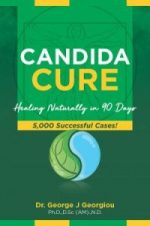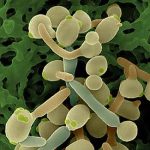 NATURAL CANDIDA TREATMENT
NATURAL CANDIDA TREATMENT
More and more practitioners around the world are agreeing that there are three major aetiological factors underlying all chronic diseases – Fungal causes, Heavy Metals and Parasites. There is also a causal link between all three factors. The Natural Candida Treatment will show you in detail how you can eradicate this pathogenic fungus successfully.
The Da Vinci Holistic Health Centre in Larnaca, Cyprus, has treated more than 5,000 cases of systemic Candidiasis and Dr Georgiou has published scientific papers in peer-reviewed journals – download these below:
Dr Georgiou has also recently published his book available on Amazon and other bookshops entitled “Candida Cure: Healing Naturally in 90 Days. 5,000 Successful Cases!”
All the supplements mentioned in this Natural Candida Treatment can be found at the Worldwidehealthcenter.
Also, see a webinar by Dr Georgiou below entitled “Candida: 5,000 Successful Cases Treated”
As well as a more recent presentation video by Dr Georgiou
WHAT IS CANDIDA?
Every person lives in a virtual sea of microorganisms, (bacteria, viruses, fungi, etc.). These microbes can reside in the throat, mouth, nose, intestinal tract, almost anywhere; they are as much a part of our bodies as the food we eat. Usually, these microorganisms do not cause illness, unless our resistance becomes lowered.
Candida albicans is yeast that lives in the mouth, throat, intestines and genitourinary tract of most humans and is usually considered to be a normal part of the bowel flora (the organisms that coexist with us in our lower digestive tract). It is actually a member of a broader classification of organisms known as fungi. C. albicans is a diploid organism which has eight sets of chromosome pairs. Interestingly, Candida is one of the few microorganisms that has a diploid gene controlling the same protein – this means that is capable of pleomorphic activity being able to mutate forms from the budding form to the mycelial, pathogenic form. Its genome size is about 16 Mb (haploid), about 30% greater than S. cerevisiae (baker’s yeast).
C. Albicans and C. glabrata are the two most common Candida species that cause Systemic Candidiasis. There are 81 different types of Candida species such as C. glabrata, krusei, lusitaniae, parapsilosis, tropicalis etc.
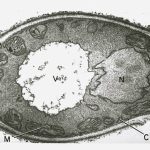 The image on the left shows an electron micrograph of a normal budding form.
The image on the left shows an electron micrograph of a normal budding form.
Traditionally, fungi are considered plants, but they contain no chlorophyll and cannot make their own food. Fungi tend to inhabit cool to tropical climates and are found in the air we breathe as well as in moist and shady soil, water, manure, dead leaves, fruit, leftover food, and in a wide variety of places and circumstances.
The problem begins when the normal, budding Candida species that we have in our gut, which 90% of babies are born with, actually changes form to the mycelial of hyphae form which is pathogenic or disease-causing. This only happens when the internal mileau of the gut and other tissues becomes more acidic, either through taking a variety of drugs that wipe out the lactobacillus species, or through eating very acidic foods such as sugar and other refined products. It appears that this change in pH can trigger genes in the Candida to begin a pleomorphic change into a stealth organism that is very virulent – it can increase itself from 1 to 100 cells in 24 hours. These 100 cells can then produce 100 each in the next 24 hours, and so on – by the 5th day you have 100 million Candida cells – this is really explosive growth!
 On the left is an image of the Mycelial form or pathogenic form of Candida with Pseudohyphae with chlamydospores (grape-like spores) making up the clusters of blastoconidia.
On the left is an image of the Mycelial form or pathogenic form of Candida with Pseudohyphae with chlamydospores (grape-like spores) making up the clusters of blastoconidia.
WHAT IS THE ROLE OF CANDIDA?
Candida has two parasitic functions:
1. gobble up any putrefied food matter in our digestive system (mostly caused by improper digestion due to low stomach acid).
2. After we die, Candida acts to decompose the body, feeding off our corpse and returning us to Mother Earth!
When conditions are right, they transform their “bud” form into the mycelial state, where filament-like roots invade deep into the mucosa in search of nourishment. The mycelia release phospholipase, an enzyme that attacks cell membranes of the mucosa, splitting fatty acids, generating free radicals, and causing inflammation in the intestine. Wherever the yeast colonize they cause symptoms, whether an itchy anus or vagina, diarrhoea, heartburn or sore throat.
The mycelial forms release 79 different toxic by-products that damage specific tissues and organs and will determine which symptoms will occur. These toxins can also compete with hormone receptor sites and cause hypothyroidism, hypoestrogenism as well as binding cortisone, progesterone and other hormones for its own use and causing endocrine deficiency states.
HOW DO YOU GET IT?
Candida albicans prefers people. Candida enters newborn infants during or shortly after birth. Usually, the growth of the yeast is kept in check by the infant’s immune system and thus produces no overt symptoms. But, should the immune response weaken, the condition known as oral thrush can occur as a result. By six months of age, 90% of all babies test positive for Candida and by adulthood, virtually all humans play host to Candida albicans and are thus engaged in a life-long relationship.
 Candida coexists in our bodies with many species of bacteria in a competitive balance. Other bacteria act in part to keep Candida growth in check in our body ecology, unless that balance is upset. When health is present, the immune system keeps Candida proliferation under control; but when immune response is weakened, Candida growth can proceed unhindered. It is an “opportunistic organism,” one which, when given the opportunity, will attempt to colonize all bodily tissues. The uncontrolled growth of Candida is known as Candida overgrowth or Candidiasis.
Candida coexists in our bodies with many species of bacteria in a competitive balance. Other bacteria act in part to keep Candida growth in check in our body ecology, unless that balance is upset. When health is present, the immune system keeps Candida proliferation under control; but when immune response is weakened, Candida growth can proceed unhindered. It is an “opportunistic organism,” one which, when given the opportunity, will attempt to colonize all bodily tissues. The uncontrolled growth of Candida is known as Candida overgrowth or Candidiasis.
Unfortunately, there are many factors in our modern society that can upset the ecological balance of the body, weaken the immune system and thus allow the yeast to overgrow. Of these, the major risk factors, which may predispose one to the proliferation of Candida, are:
- STEROID HORMONES, IMMUNOSUPPRESSANT DRUGS such as cortisone which treat severe allergic problems by paralyzing the immune system’s ability to react
- PREGNANCY, MULTIPLE PREGNANCIES or BIRTH CONTROL PILLS which upset the body’s hormonal balance
- DIETS HIGH IN CARBOHYDRATE AND SUGAR INTAKE, YEAST AND YEAST PRODUCTS, AS WELL AS MOLDS AND FERMENTED FOODS
- PROLONGED EXPOSURE TO ENVIRONMENTAL MOLDS
- ANTIBIOTICS and SULFA DRUGS – probably the chief culprit of all, antibiotics kill all bacteria.
They do not distinguish good bacteria from bad. Antibiotics kill the “good” flora which normally keeps the Candida under control. This allows for the unchecked growth of Candida in the intestinal tract. It is normally difficult to recover a yeast culture from bodily surfaces. However, after 48 hours of taking tetracycline, yeast can be cultured easily from anyone.
The prevalence today of Candida may be most directly related to the widespread societal exposure to antibiotics – from prescriptions for colds, infections, acne, and from additional consumption of antibiotic-treated foods such as meats, dairy, poultry and eggs. Notably, antibiotics do not kill viruses; they only destroy bacteria. Yet, they are universally prescribed for all colds, flus and other viral problems. Such indiscriminate and extensive use of antibiotics is not only considered a primary cause of Candida overgrowth, but is recently being found to be responsible for the unbridled development of “killer bacteria.”
The rapid and direct proliferation of the yeast following antibiotic use strongly suggests that the problem of Candida is one which stems from an inner state of imbalance, rather than from an outside attack by a microbe or disease. This is a very important point to understand if one wishes to get rid of an overgrowth problem, suggesting that Candida is not so much a problem as is the body’s own failure to control it!
A SERIOUS PROBLEM?
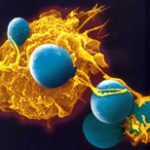 Once begun, if not recognized and treated appropriately, Candida overgrowth can result in a self-perpetuating, negative cycle. Large numbers of yeast germs can weaken the immune system, which normally protects the body from harmful invaders. Even though Candida is part of the ecological balance in the body since birth, it is still recognized by the immune system as a foreign body that needs to be controlled.
Once begun, if not recognized and treated appropriately, Candida overgrowth can result in a self-perpetuating, negative cycle. Large numbers of yeast germs can weaken the immune system, which normally protects the body from harmful invaders. Even though Candida is part of the ecological balance in the body since birth, it is still recognized by the immune system as a foreign body that needs to be controlled.
So, when overgrowth occurs, a chronic stimulation to the immune system results — every second, every minute, every hour, every day, every month, every year — in an attempt by the immune system to regain control. In time, it is believed that this can exhaust the immune system, predisposing one to more serious degenerative processes. Many believe chronic drains on the immune system such as Candida and parasites can play a direct role in the development of cancer and AIDS. Seen in this light, Candida overgrowth should not be taken lightly.
Candida produces its effects by two routes. Firstly, there is a direct route initially by invasion of the gut and the vagina; Candida is capable of spreading along the entire length of the gut. The presence of chronic vaginitis can often indicate wide-spread candidiasis. Secondly, there can be indirect effects caused by spread of toxins through the bloodstream to other sites. In the gut Candida can alter its form from a simple yeast organism to a ‘mycelial fungal form’, a network of root-like fibres called rhizoids. These can penetrate and damage the gut lining, allowing foreign food proteins to be absorbed into the bloodstream and to challenge the immune system so that multiple food allergies may result.
Toxic waste from Candida infestations can also be absorbed into the bloodstream causing “Yeast Toxin Hypersensitivity” leading to many symptoms such as anxiety, depression and impaired intellectual functioning. The main toxin implicated here is acetaldehyde, which is a normal by-product of metabolism, produced in small amounts and rendered harmless by the liver. If, however, there is excess production of this by Candida and a lack of the appropriate liver enzymes which tend to be deficient in 5 per cent of the general population, the acetaldehyde will become bound strongly to human tissue. This may cause impaired neuro-transmission in the brain, resulting in anxiety, depression, defective memory and cloudy thinking.
The immune system may concurrently be also adversely affected by poor nutrition, heavy exposure to molds in the air, as well as an increasing number of chemicals in our food, water and air, including petrochemicals, formaldehyde, perfumes, cleaning fluids, insecticides, tobacco and other indoor and outdoor pollutants. Over 10,000 chemicals have been added to our food supplies alone that were not there just 100 years ago! We do not have the genetic recognition of these substances as foods or as useful additions to our bodies.
Specifically, yeast tend to secrete a toxin called Gliotoxin which can disrupt the immune system by inactivating enzyme systems, producing free radicals, interferes with the DNA of leukocytes and is cytotoxic.
Resulting lowered resistance may not only cause an overall sense of ill health, but also may allow for the development of respiratory, digestive and other systemic symptoms. One may also become predisposed to developing sensitivities to foods and chemicals in the environment. Such “allergies” may in turn cause the membranes of the nose, throat, ear, bladder and intestinal tract to swell and develop infection.
Such conditions may lead the physician to prescribe a “broad spectrum” antibiotic . . . which may then further promote the overgrowth of Candida and strengthen the existing negative chain of events, leading to further stress on the immune system and increased Candida-related problems.
Heavy metals are also found in higher amounts when Candida is present as the Candida yeast actually stores the metals which are then released when treatment begins. It is therefore wise to begin a heavy metal chelating programme concomitantly with the Candida protocol (see www.detoxmetals.com) for such a programme using natural chelating agents).
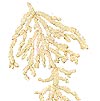
Occupational exposure studies have found mercury impairs the body’s ability to kill Candida albicans by impairment of the lytic activity of neutrophils and myeloperoxidase in workers whose mercury excretion levels are within current safety limits. Such levels of mercury exposure were also found to inhibit cellular respiratory burst. A population of plant workers with average mercury excretion of 20 ug/g creatinine was found to have long lasting impairment of neutrophil function. Immune Th1 cells inhibit candida by cytokine related activation of macrophages and neutraphils.
Development of Th2 type immune responses deactivates such defenses. Mercury inhibits macrophage and neutrophil defense against candida by its affects on Th1 and Th2 cytokine effects. Candida overgrowth results in production of the highly toxic canditoxin and ethanol which are known to cause fatigue, toxicity, and depressive symptoms. Another study found such impairment of neutrophils decreases the body’s ability to combat viruses such as those that cause heart damage, resulting in more inflammatory damage.
How Yeast Toxins Injure the Immune System
S = Suppressor cell; H = Helper cell; B = B-cell
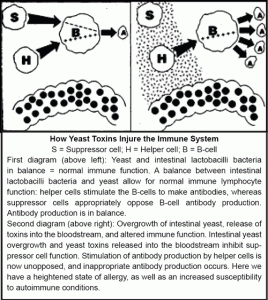
First diagram: Yeast and intestinal lactobacilli bacteria in balance = normal immune function. A balance between intestinal lactobacilli bacteria and yeast allow for normal immune lymphocyte function: helper cells stimulate the B-cells to make antibodies, whereas suppressor cells appropriately oppose B-cell antibody production. Antibody production is in balance.
Second diagram: Overgrowth of intestinal yeast, release of toxins into the bloodstream, and altered immune function. Intestinal yeast overgrowth and yeast toxins released into the bloodstream inhibit suppressor cell function. Stimulation of antibody production by helper cells is now unopposed, and inappropriate antibody production occurs. Here we have a heightened state of allergy, as well as an increased susceptibility to autoimmune conditions.
WHAT ARE THE SIGNS OF CANDIDA INFECTION?
The result of heightened Candida overgrowth is a list of adverse symptoms of considerable length. Basically, the characteristics of Candida overgrowth fall under three categories, those affecting:
1. The gastrointestinal and genitourinary tracts
2. Allergic responses, and
3. Mental/emotional manifestations.
Initially the signs will show near the sights of the original yeast colonies. Most often the first signs are seen in conditions such as nasal congestion and discharge, nasal itching, blisters in the mouth, sore or dry throat, abdominal pain, belching, bloating, heartburn, constipation, diarrhea, rectal burning or itching, vaginal discharge, vaginal itching or burning, increasingly worsening symptoms of PMS, prostatitis, impotence, frequent urination, burning on urination, bladder infections.
But, if the immune system remains weak long enough, Candida can spread to all parts of the body causing an additional plethora of problems such as fatigue, drowsiness, uncoordination, lack of concentration, mood swings, dizziness, headaches, bad breath, coughing, wheezing, joint swelling, arthritis, failing vision, spots in front of the eyes, ear pain, deafness, burning or tearing eyes, muscle aches, depression, irritability, sweet cravings, increasing food and chemical sensitivities, numbness and tingling, cold hands and feet, asthma, hay fever, multiple allergies, hives and rashes, eczema, psoriasis, chronic fungal infections like athlete’s foot, ringworm and fingernail/ toenail infections.
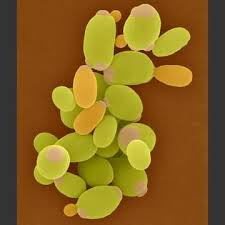 In addition, 79 different toxic products are released by Candida, which in itself places a considerable burden on the immune system. These get into the bloodstream and travel to all parts of the body where they may give rise to a host of adverse symptoms. Yeasts in the body produce a by-product called acetaldehyde, a toxic substance resulting in several health consequences. In fact, acetaldehyde is the compound that produces the symptoms in an alcohol “hang-over.”
In addition, 79 different toxic products are released by Candida, which in itself places a considerable burden on the immune system. These get into the bloodstream and travel to all parts of the body where they may give rise to a host of adverse symptoms. Yeasts in the body produce a by-product called acetaldehyde, a toxic substance resulting in several health consequences. In fact, acetaldehyde is the compound that produces the symptoms in an alcohol “hang-over.”
Molybdenum plays a role as a cofactor in helping break down acetaldehyde to a form that actually provides the body with energy.* Molybdenum plays a large role in the detoxification pathway for acetaldehyde in the human body. There are dozens of known toxins released by yeast in the body. This damages and overworks both the liver and the immune system as the body tries to detoxify these poisons.
In Candida overgrowth, the yeast colonies can dig deep into intestinal walls, damaging the bowel wall in their colonization. The invasive Candida filaments produce disease affecting the entire body in a number of ways.
Destruction of the intestinal membrane, allowing for:
Severe leaks of toxins from activity of undesirable microorganisms within the layers of encrusted faecal matter into the bloodstream causing a variety of symptoms and aggravating many pre-existing conditions. Under the anaerobic conditions of the colon, Candida itself will produce a number of toxins by fermenting sugars.
Absorption of incompletely digested dietary proteins. These are extremely allergenic and may produce a large spectrum of allergic reactions. Food allergies are very common with Candidiasis, as is environmental hypersensitivity (to smoke, auto exhaust, natural gas, perfumes, air pollutants), probably due to Candida filaments infiltrating lung and sinus membranes.
Migration of Candida itself into the bloodstream. Once in the blood, it has access to all body tissues and may cause various gland or organ dysfunctions, weakening the entire system and further lowering resistance to other diseases
Candida can also attack the immune system, causing suppressor cell disease, in which the immune system produces antibodies to everything at the slightest provocation, resulting in extreme sensitivities.
Finally, Candida overgrowth can be dangerous if not controlled. The persistent, constant challenge to the immune system by an ever-increasing, long-term overgrowth of Candida can eventually serve to wear down the immune system and cause a seriously weakened capacity for resistance to disease.
Women are more likely to get Candida overgrowth than are men. This is related to the female sex hormone progesterone which is elevated in the last half of the menstrual cycle. Progesterone increases the amount of glycogen (animal starch, easily converted to sugar) in the vaginal tissues which provide an ideal growth medium for Candida. Progesterone levels also elevate during pregnancy. Men are affected less frequently but are by no means invulnerable.
HOW DO YOU KNOW YOU’VE GOT IT?
Currently, diagnosis is primarily clinical. Since almost everyone has Candida in their bodies, tests for its presence are useless; confirmation of overgrowth is very difficult through laboratory tests. And, since what it does is to paralyze the immune system against it, allergy tests to determine the system’s reaction to it are also ineffectual.
Furthermore, the results of the yeast imbalance — the combined effects of different hormones, poisons generated and released by the yeast into the bloodstream, and the confusion created in the immune system — produces such a wide variety of symptoms and which are seemingly so unrelated (such as wheezing, depression and fungus infection under fingernails) that a definite diagnosis cannot be made from any specific pattern of signs and symptoms.
Conclusive laboratory tests have not yet been developed, even though there are a number of tests that can help in the diagnosis. The patient’s history and symptoms are usually the key to arriving at a diagnosis, and Dr. Crook’s Candida Questionnaire is extremely helpful as it enables the patient to score their symptoms and arrive at a number – anything above 180 for women, and 140 for men is highly significant and represents the majority of symptoms that relate to this condition. There are other testing procedures that I use in clinical practice, mainly bio-dermal screening using the VEGA Biodermal screening.
When an ampoule of pathogenic Candida is placed in the honeycomb of the VEGA EXPERTand the probe placed on an acupoint of a finger, it is very clear when a patient “resists” as the conductivity drops. What I have also found time and time again in over 1,500 Candida patients that I have tested to date is that not only do they register positive on the VEGA to Candida, but also all other yeast families such as yeast, mushrooms, and fermented products involving east such as wine, beer and vinegar products. I personally find the VEGA a very useful diagnostic device that can answer a lot of questions that more traditional laboratory testing cannot.
Another method of testing for Candida is to use a form of Kinesiological muscle testing called AUTONOMIC RESPONSE TESTING (ART) invented by a German neurologist Dr. Dietrich Klinghardt, M.D.,Ph.D.
There are certain practitioners of Biological Medicine that believe systemic Candidiasis is a result of the internal mileau, and that if you clean up this toxic internal mileau then the Candida will retreat. This is not my experience, as I have seen many clients that have spent weeks detoxifying, doing liver and gall bladder cleanses, colon hydrotherapy, being on an optimum diet, taking tons of supplements but still had Candida years later upon testing. I have even seen a couple of patients that went through the full Gerson Cancer programme and still had systemic Candidiasis!
It is my opinion, if one wants to be successful at eradicating this pathogen, that you must kill the pathogen using natural anti-fungal remedies, while at the same time cleaning up the internal mileau. One must also try to convert the pathogenic, mycelial Candida back to the normal budding yeasts – this is a crucially important step often missed by many practitioners of natural medicine. The only remedies that can do this successfully are the Sanum isopathic fungal remedies that have been invented by Professor Enderlein after many years of experimentation using darkfield microscopy.
Many physicians now believe that a clinical trial for Candida overgrowth is of so little risk and expense that it should be considered in any chronic illness.
One clinical trial a person may try is to avoid certain foods for five days that are known to facilitate the growth of yeast. Such foods include the following:
- SUGAR and SIMPLE CARBOHYDRATES such as found in all sweetened food including the use of honey, molasses, sorghum, maple syrup, sugar, fructose, maltose, dextrose, corn syrup, etc. Fruit juices should also be avoided.
- YEAST PRODUCTS such as beer, wine, yeast leavened bread, natural B vitamins, brewer’s yeast
- FERMENTED and MOLD FOODS such as mushrooms, cheese, vinegar, mustard, catsup, relish and other condiments made with vinegar.
After avoiding these foods for 5 days, try adding them back into the diet in large quantities. By observing how one feels while off these foods, in comparison to any adverse affects experienced when going back on the foods, one may get a clue as to any possible yeast involvement as a causative factor for any adverse symptoms.
If adverse symptoms are provoked by a return to the yeast enhancing foods, your physician may feel that there is at least a possible reason to suspect Candida overgrowth, which may then warrant more definitive action. This may not be the best method, but if you are not a VEGA practitioner or use any other forms of biodemal screening or other functional tests that tap into the ANS, then this may be a good way to start.
Natural Candida Treatment
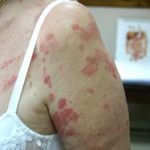 I hear from practitioners and patients the same story when it comes to treating Candida – that the patient feels better initially while they are on the treatment programme, but when they stop it they find that many of the old symptoms will return after a few weeks or months. Why is this the case? In my experience, I believe that it is literally impossible to kill ALL the pathogenic Candida organisms in the body tissues and organs – remember these are the mycelial or rhizoid forms, not the normal budding forms that cause no symptoms.
I hear from practitioners and patients the same story when it comes to treating Candida – that the patient feels better initially while they are on the treatment programme, but when they stop it they find that many of the old symptoms will return after a few weeks or months. Why is this the case? In my experience, I believe that it is literally impossible to kill ALL the pathogenic Candida organisms in the body tissues and organs – remember these are the mycelial or rhizoid forms, not the normal budding forms that cause no symptoms.
So as we take the various antifungals, certainly some of these pathogenic forms will be killed off, but even if a small percentage were to remain then they would quickly proliferate as soon as we go back to a normal diet. It will only be a matter of a few weeks before symptoms return again in force – this is classically what happens with cases of vaginal thrush.
One of the factors that I consider unique in this Natural Candida Treatment that took me more than 10 years to develop is the use of the Sanum Isopathic remedies that can actually convert the pathogenic forms of Candida back to their normal, budding forms. This is based on the work of Prof. Enderlein many years ago who developed what are now called the Sanum remedies.
The Natural Candida Treatment that my patients have named the “Da Vinci Candida Treatment Protocol” that I have used successfully for a number of years, has five basic objectives:
1. First, starve the Candida by eliminating the foods mentioned above that feed it.
2. Second, kill the Candida through the use of anti-Candida products mentioned below.
3. Repopulate the bowel flora with a high-potency GG-probiotic such as Culturelle that contains 30 billion live bacteria and has been well researched in university trials.
4. Regulate the dysbiosis and convert the pathological, mycelial form of Candida back to the normal form by the use of Sanum remedies (see details below).
5. Restore biochemical balance to the body and strength to the immune system, which will allow the body once again to regain and maintain control over Candida growth by optimizing the diet – this would involve avoiding food intolerances and following the Metabolic Type Diet by Wolcott. Also kill off other parasites using Hulda Clark’s parasite cleanse or similar, and begin chelating heavy metals out of the system.
KILLING CANDIDA
 I have found that it is literally impossible to treat Candida if one does not cut out ALL forms of sugar, and that includes fructose from fruit sources for a period of 3 months. When implementing the Natural Candida Treatment foods that should be strictly AVOIDED for a 3-month period include:
I have found that it is literally impossible to treat Candida if one does not cut out ALL forms of sugar, and that includes fructose from fruit sources for a period of 3 months. When implementing the Natural Candida Treatment foods that should be strictly AVOIDED for a 3-month period include:
1. SUGAR – and all foods that contain sugar. These include white and brown sugar, honey, syrups, liquors, lactose, fructose, all confectionary and sweet cakes, chocolates, ice-creams, home-made sweets and cakes, biscuits, fizzy beverages, all fruit drinks.
2. YEAST – and all foods that contain yeast including breads, vinegar, ketchups, mayonnaise and pickles.
3. FRESH AND DRIED FRUIT – all fruit whether fresh, cooked, tinned or dried. All dried fruits and fruit juices should be avoided for the full 3 months, but fresh fruit can be avoided for the initial SIX WEEKS ONLY – your health practitioner will advise you when to begin eating fruit again. Obviously this includes fresh fruit juices (vegetable juices are OK), as well as marmalades.
4. MUSHROOMS – all types, including Chinese mushrooms such as Shitake.
5. REFINED FOODS – all white flours, white rice, white pasta products, cornflour, custard and white cereal products, unless they are wholemeal or organic.
6. FERMENTED PRODUCTS – all alcoholic beverages, vinegar and all vinegar products such as ketchup, mayonnaise and pickles.
7. NUTS – all types of nuts that are cleaned and packaged without their shells – these have a tendency to collect fungal spores and moulds from the atmosphere which will antagonize the Candida. Nuts that are fresh with their shells are OK.
Most other foods are allowed, but it is very wise to avoid food intolerances that will cause further inflammation and hinder the treatment of Candida. In the meantime, there are other nutritional supplements, herbs and homeopathics that are given, as follows.
1. CANDA PLUS – a Doctor-formulated compound that contains CANDA PLUS features calcium undecylenate, a fatty acid with health promoting properties, as well as Pau d’arco, berberine and a vegetarian enzyme blend formulated specifically to promote a healthy intestinal microenvironment. – 2 caps x 3 daily
2. HOROPITO (practitioner-strength) – a New Zealand herbal product which contains two powerful anti-fungal agents that have been shown to kill Candida – Pseudowinterata colorata and the synergistic herb Aniseed which boosts effectiveness 6 fold – 1 cap twice daily.
3. CAPRYLATE – Caprylic acid is a fat soluble short chain fatty acid found in human breast milk and coconuts that has been found to help maintain the growth of beneficial bacteria in the gut. and stops the Candida reproducing – 1 cap x 3 daily
4. CANDIDA 30c – homeopathic – freely available in most pharmacies – two pillules or one cap x 3 daily for 2 weeks only. These are stopped just as the Sanum remedies are begun.
5. ACIDOPHILUS AND BIFIDUS – a high count, multi strain Acidophilus and Bifidus probiotic dietary supplement. 60 billion cfu’s per capsule. It contains 5 different strains of friendly bacteria such as L. Acidophilus, L. Rhamnosus, L. Plantarum, B. Lactis, and B. Bifidum. Dosage: One capsule, 3 times per day.
6. A good-quality multivitamin such as HMD MULTIS (1 caps x 3 daily), as well as Omega fatty acids in the form of KRILL OIL (1 cap x 2 daily).
It is also always worth undergoing a parasite cleanse using a herbal formula such as PARAFORM PLUS ONE (one capsule x 3 times daily).
All of these remedies can be found at www.worldwidehealthcenter.net and can be shipped worldwide. There is a complete CANDIDA KIT that contains everything that you require, along with handouts to guide you – simply email [email protected] and request it.
After two weeks of beginning the Natural Candida Treatment, certain specialised isopathic remedies are introduced, known as SANUM remedies from Germany, after the work of the famous Prof. Enderlein, as follows:
1. Mucokehl D5 tabs – 1 tab twice weekly.
2. Pefrakehl D4 caps – 1 cap twice weekly.
3. Notakehl D5 tabs – 1 tab twice weekly.
4. Fortakehl D5 tabs – 1 tab twice weekly.
5. Nigersan D5 tabs – 1 tab twice weekly.
6. Albicansan D4 caps – 1 cap twice weekly.
If there is vaginal discharge, or anal Candida, then vaginal or anal suppositories of Albicansan D3 must also be used to eliminate this topical infection. These can be used every second day last thing at night after sex.
These are continued for about 10 weeks until the end of the Natural Candida Treatment. It is wise to begin the Sanum remedies TWO WEEKS after beginning the general protocol in order to allow a considerable portion of the Candida to die off, and to reduce the severity of the Herxheimer reaction. Fruit can be re-introduced back into the diet SIX WEEKS after the beginning of the Candida diet, which is equivalent to 4 weeks after the beginning of the Sanum remedies.
All capsules and tablets should be taken away from food and should not be taken together as they clash. Follow this simple table of how and when to take your Sanum remedies. These remedies are taken BEFORE or AWAY from food. Open the capsules and pour the powder that they contain under the tongue and allow it to absorb for about a minute. The tablets you can dissolve in the mouth slowly.
Prof. Enderlein’s SANUM remedies work by changing the harmful microorganisms in the body fluids to non-aggressive forms, probably by changing the pH and electrical conductivity – see Explore! The Physics Behind Live Blood Analysis and Zeta Potentials, Vol. 14, No. 5., September 2005 by the same author. Harmful bacteria and toxins are broken down and excreted through natural processes. They also help to alleviate the dysbiosis and bring the internal mileau of the intestine back into balance.
HERXHEIMER REACTIONS

Depending on the severity of Candida overgrowth and the amount of the agents taken, the Candida can be killed off in vast numbers in a very short period of time when using the Natural Candida Treatment. As they are killed, they release substances that are toxic to the body. If this process occurs more quickly than the toxins can be cleared from the bloodstream and eliminated by the body, a temporary toxic or allergic-type reaction can occur. The technical name for this experience is a Herxheimer reaction ; it is more commonly referred to as “die off.”
Usually die off lasts only a few hours, though it can last several days. It can usually be controlled almost entirely by the amount of ingestion of the agent and the rate or frequency it is taken. Signs of Herxheimer reaction can be many and varied but generally involve such discomfort as aching, bloating, dizzines, nausea, and overall “goopy sick” feeling, or a worsening of original symptoms. Fortunately, die off is generally short in duration, and although uncomfortable, is at least a confirmation of the presence of Candida and that something “good” is happening.
Exercise as well as insuring proper, daily bowel evacuation has been reported as being helpful in countering the adversities of die off. Maintaining a high daily intake of pure water is also important to keep the channels of elimination open.
It may be possible to slow down these symptoms, many of which are caused by acetaldehyde, one of the main toxins produced by yeast. Taking Molybdenum can break down this toxin into something far less harmless. When examining the biochemical pathway of Acetaldehyde into acetic acid – Threonine to acetaldehyde to acetic acid to acetyl coenzyme A, – NAD (niacine amide) and aldehyde oxidase is required which are both dependent on riboflavin, iron, and molybdenum – it may be worth considering adding these to the Candida protocol if Herxheimer reactions are bad.
BALANCING BODY CHEMISTRY
It is a commonly recognized and accepted fact that immune system efficiency is highly dependent on the proper biochemical balance in the body. This of course, is dependent on proper and adequate nutrition to supply the body with all the required biochemical constituents (vitamins, minerals, enzymes, intrinsic factors, etc.).
Different people require different amounts and balances of nutrients for optimum health. The criteria for the determination of these differing nutritional requirements lies within the definition of one’s metabolic type, i.e., the genetically determined metabolic and nutritional parameters that define each person’s individuality on every level.
It is precisely because different people have different metabolic types, and therefore different needs for nutrition, that the allopathic, symptom-treatment approach in nutrition is baseless and so often ineffective. This further explains why what (nutritionally) helps make one person better, may have little or no effect on another, or even make a third person worse.
I have not tried to modify Natural Candida Treatment as I have found it to be so successful in the treatment of over 1,500 patients to date, that I dare not juggle with it in case it loses its effectiveness. I’m sure that it can be improved upon, and would welcome comments from other practitioners working with Candida. It is only through sharing that we will grow and become better practitioners.
 This successful Natural Candida Treatment has taken more than 10 years to develop during the concerted efforts of Dr. Georgiou, who tried to cure his own Candidiasis. You can read his story, as well as a complete chapter on Candidiasis in his new book available on Amazon entitled Curing the “Incurable” with Holistic Medicine: The Da Vinci Secret Revealed. It is also available as an E-Book that you can download immediately.
This successful Natural Candida Treatment has taken more than 10 years to develop during the concerted efforts of Dr. Georgiou, who tried to cure his own Candidiasis. You can read his story, as well as a complete chapter on Candidiasis in his new book available on Amazon entitled Curing the “Incurable” with Holistic Medicine: The Da Vinci Secret Revealed. It is also available as an E-Book that you can download immediately.
This led him into studying Natural Medicine with many practitioners around the world until he finally cured himself of chronic fatigue, ME, leaky gut syndrome, fibromyalgia, compromised immunity and systemic Candidiasis using Natural Medicine.
Consequently, the Da Vinci Holistic Health Centre in Larnaca, Cyprus (www.naturaltherapycenter.com) has successfully treated more than 5,000 cases using the Natural Candida Treatment over the last decade, presenting with symptoms as diverse as chronic fatigue, ME, MS, severe eczema, chronic coughs and sore throats, recurring vaginal discharge and thrush, halitosis, polycystic ovaries, sterility and much more.
As there is a lot of detail in the Natural Candida Treatment, Dr Georgiou is providing PHONE CONSULTATIONS for whoever is interested in pursuing this successful programme.
Research Papers on the Da Vinci Candida Protocol:
Treating Candida Naturally by Dr Georgiou
Videos to Watch:
Da Vinci Candida Protocol by Dr Georgiou
Yeast Infection Animation in Vagina

Contact us or book an appointment now.

